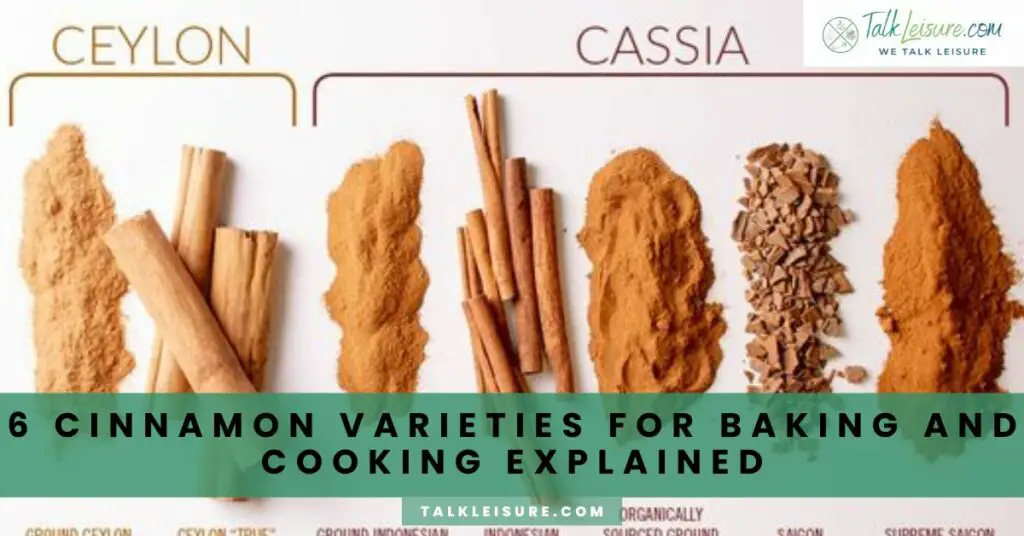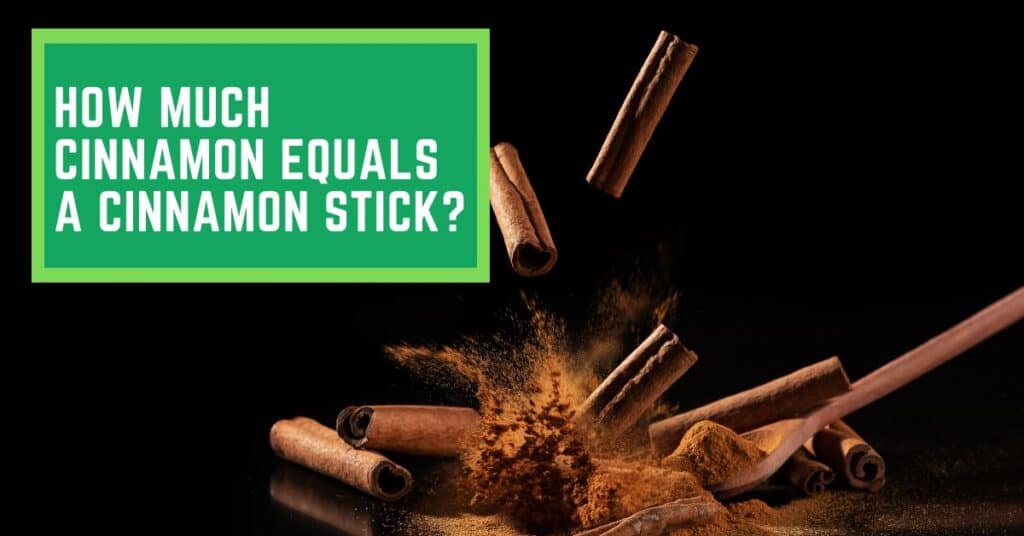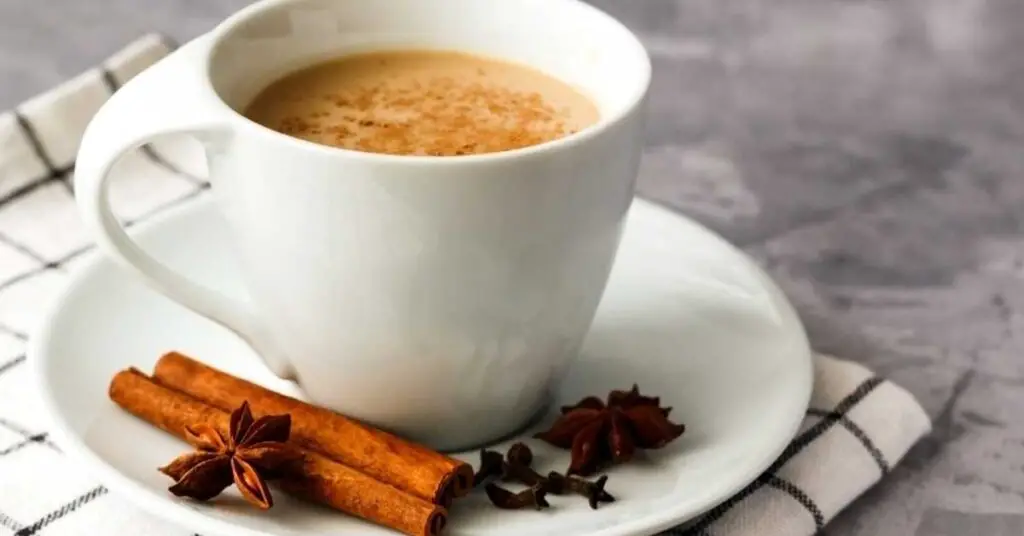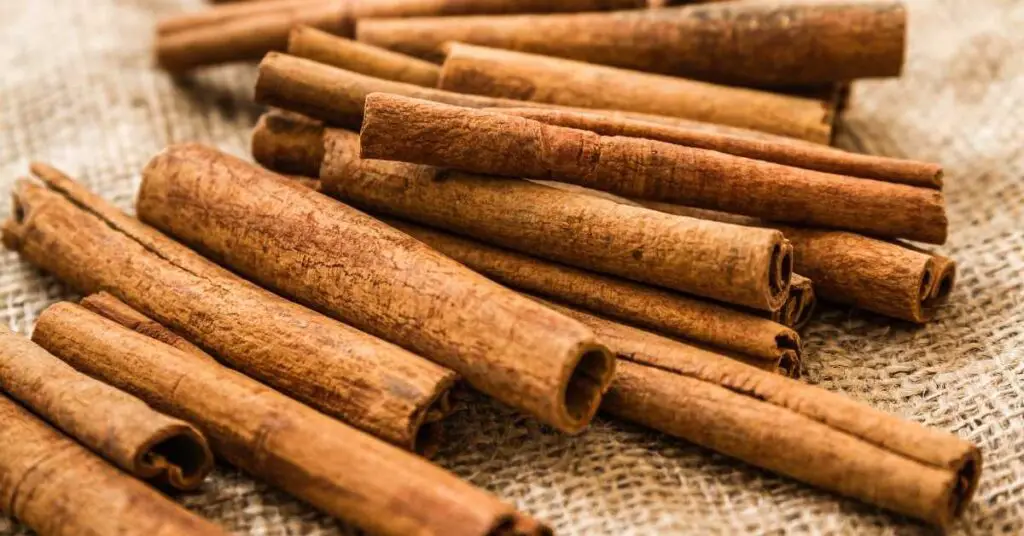Cinnamon is a beloved spice that is widely used in baking and cooking due to its unique flavor and aroma.
It is derived from the bark of trees in the Cinnamomum family and has been used for centuries in various cuisines around the world.
Here are a few reasons why these 6 cinnamon varieties are so popular and versatile in the world of culinary arts:
Distinctive Flavor: Cinnamon has a warm, sweet, and slightly spicy taste that adds depth and complexity to a variety of dishes. It can be used in both sweet and savory recipes, making it a versatile spice for cooks of all kinds.
Aromatic Qualities: The scent of cinnamon is highly appealing and can instantly create a cozy and comforting atmosphere in the kitchen. Its aroma lingers in the air and entices the senses, making it a favorite spice for many home cooks and bakers.
Multiple Uses: Cinnamon can be used in a wide range of dishes, from desserts like cakes, cookies, and pies to savory dishes like curries and stews. It pairs well with fruits, nuts, chocolate, and even certain meats, making it a go-to spice for adding flavor to a variety of recipes.
Health Benefits: Cinnamon is not only delicious but also offers numerous health benefits. It contains powerful antioxidants, anti-inflammatory properties, and may help regulate blood sugar levels. Incorporating cinnamon into your cooking and baking can be a tasty way to reap these health benefits.
1. Ceylon Cinnamon (Cinnamomum Verum)
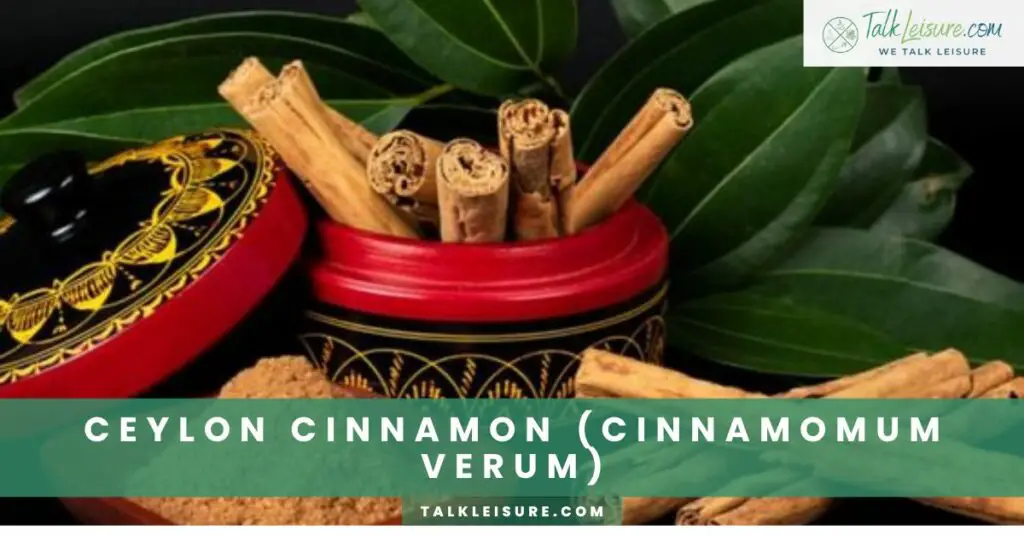
Ceylon Cinnamon: Origin, flavor profile, and aroma
Ceylon Cinnamon, also known as true cinnamon, is native to Sri Lanka and has a distinct flavor profile and aroma.
It has a sweet and slightly citrusy taste, with a delicate and complex fragrance.
The bark of the Ceylon Cinnamon tree is thinner and lighter in color compared to other types of cinnamon, giving it a more delicate and refined flavor.
Health Benefits and Culinary Uses of Ceylon Cinnamon
Ceylon Cinnamon not only adds a delicious flavor to dishes but also offers several health benefits.
It is known for its anti-inflammatory properties, can help regulate blood sugar levels, and contains powerful antioxidants.
In culinary applications, it is commonly used in sweet desserts, hot beverages like chai tea, and even in savory dishes like curries and marinades.
Its versatility and health benefits make it a valuable spice in the kitchen.
2.Cassia Cinnamon (Cinnamomum cassia)
Cassia Cinnamon: Characteristics, Taste, and Scent
Now let’s talk about Cassia Cinnamon!
It has its own distinct characteristics that make it a popular spice choice.
Cassia Cinnamon has a slightly stronger and spicier taste compared to Ceylon Cinnamon.
Its bark is thicker and darker in color, giving it a more robust flavor.
The aroma of Cassia Cinnamon is warm and inviting, making it perfect for adding depth and warmth to dishes.
8 Cinnamon-Spiced Dishes from Around the World
3.Saigon Cinnamon (Cinnamomum Loureiroi)
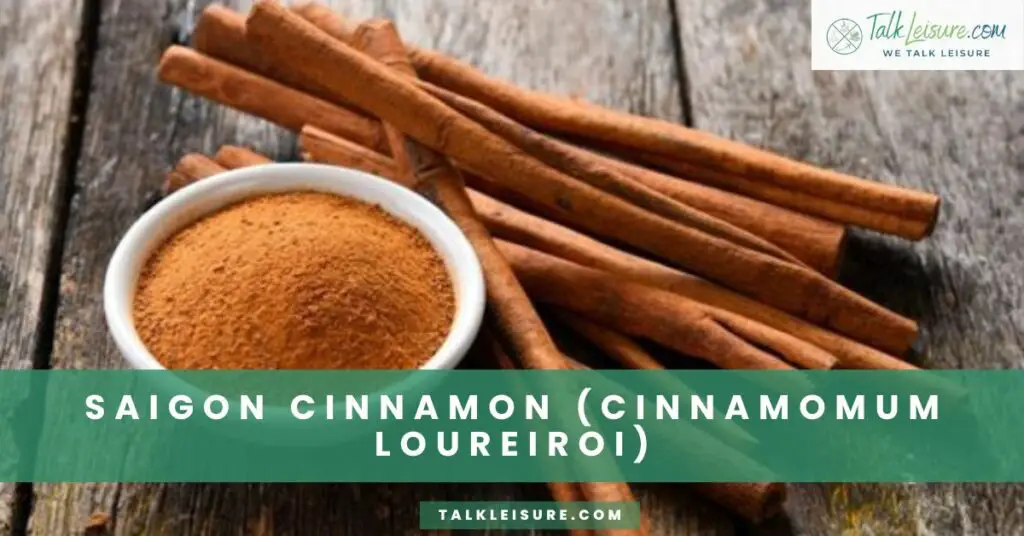
Saigon Cinnamon: Aromatic Properties and Intense Flavor
I absolutely adore using Saigon Cinnamon in my recipes!
This incredible spice, also known as Vietnamese cinnamon, has a wonderfully intense and aromatic flavor.
Its taste is bold and spicy, with a hint of sweetness.
The fragrance of Saigon Cinnamon is captivating and adds a delightful aroma to my dishes.
Distinctive Features and Culinary Applications of Saigon Cinnamon
Saigon Cinnamon stands out with its unique characteristics that make it a fantastic option for culinary creations.
It has a reddish-brown appearance with a thicker bark, giving it a robust and intense flavor.
I love incorporating Saigon Cinnamon in baking, especially for cinnamon rolls and apple pies.
It also adds a lovely touch to hot beverages like coffee and hot chocolate.
4.Korintje Cinnamon
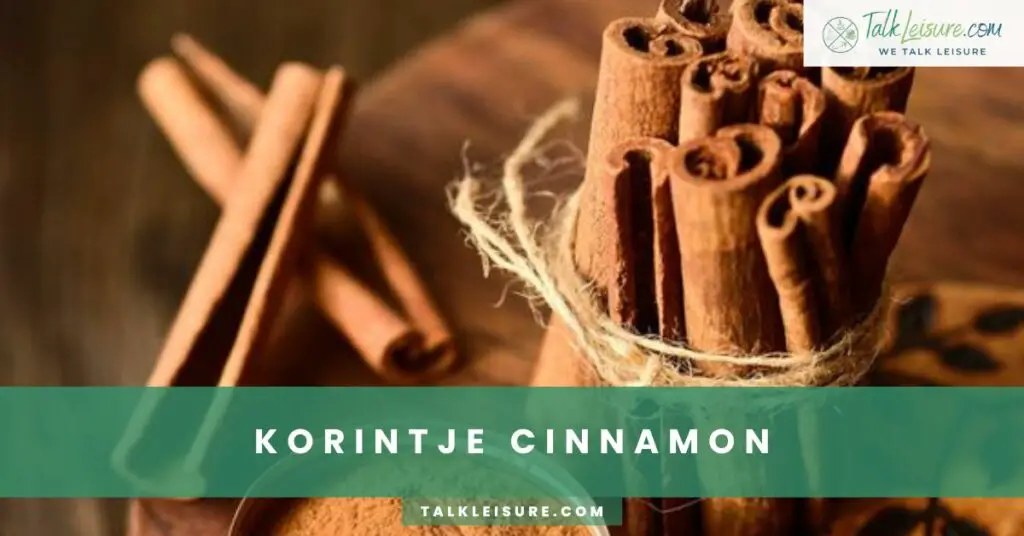
Flavor Profile and Culinary Uses
I quite enjoy using Korintje Cinnamon in my recipes!
This particular cinnamon variety, also known as Indonesian cinnamon, has a distinct and flavorful taste.
It has a warm and slightly sweet flavor with hints of spice.
The aroma of Korintje Cinnamon is delightful and adds a lovely depth to my dishes.
Korintje Cinnamon has its own unique characteristics that make it a great choice in the kitchen.
It has a darker color and a thinner bark compared to other cinnamon varieties.
Its flavor is milder and less intense.
I love using Korintje Cinnamon in savory dishes, like curries and stews. It also adds a wonderful touch to desserts like rice puddings and fruit crumbles.
5.Indonesian Cinnamon
Characteristics, Uses, and Availability
Let me tell you a bit more about Indonesian Cinnamon, also known as Korintje Cinnamon.
It’s a variety of cinnamon that has a unique and distinct flavor.
With its warm and slightly sweet taste, it adds a delightful depth to dishes.
Not only that, but the aroma of Indonesian Cinnamon is simply amazing!
What makes Indonesian Cinnamon stand out is its darker color and thinner bark compared to other cinnamon varieties.
It has a milder and less intense flavor, making it a versatile spice to use in the kitchen.
When it comes to culinary uses, Indonesian Cinnamon works wonders in both savory and sweet recipes.
I personally love adding it to curries and stews for that extra touch of warmth and spice.
And let’s not forget about desserts! It adds a wonderful twist to rice puddings and fruit crumbles.
Availability-wise, you’ll be happy to know that Indonesian Cinnamon is readily available in most grocery stores and online.
So go ahead and give it a try in your next recipe.
I’m sure you’ll love the flavor and aroma it brings to your dishes!
6.Vietnamese Cinnamon (Cinnamomum Aromaticum)
Vietnamese Cinnamon: Aroma, flavor, and culinary versatility
Let me introduce you to Vietnamese Cinnamon, also known as Cinnamomum aromaticum.
It is another variety of cinnamon that offers a unique and distinctive experience.
With its rich aroma and intense flavor, it adds a delightful kick to dishes.
Vietnamese Cinnamon is known for its reddish-brown color and thicker bark.
It has a stronger and more potent taste compared to other cinnamon varieties, making it perfect for those who prefer a bold and robust flavor profile.
When it comes to culinary uses, Vietnamese Cinnamon is incredibly versatile.
It enhances the taste of both sweet and savory dishes.
Add it to your baked goods for that extra hint of warmth and spice, or sprinkle it on roasted vegetables to elevate their flavors.
Fortunately, Vietnamese Cinnamon is readily available in most grocery stores and online shops.
So, why not give it a try in your next culinary adventure?
I guarantee that its aroma, flavor, and culinary versatility will leave you wanting more!
Conclusion
Chinese Cinnamon, also known as Cinnamomum cassia, is a great option for those who prefer a stronger, bolder cinnamon flavor.
It has a reddish-brown color and a thicker bark, which adds visual appeal to your dishes.
Chinese Cinnamon is widely used in Chinese cuisine and is perfect for seasoning meats and adding flavor to braised dishes and stir-fries.
It also works well for flavoring teas and mulled wines.
You can easily find Chinese Cinnamon in most grocery stores and online retailers.
If you prefer a milder cinnamon flavor, Vietnamese Cinnamon is a good alternative to consider.
Both Chinese and Vietnamese Cinnamon offer their unique qualities, so it’s worth experimenting to find your favorite.
Incorporating different types of cinnamon into your cooking repertoire can enhance the taste and aroma of your dishes.
Frequently Asked Questions
What distinguishes Ceylon Cinnamon from other varieties?
Ceylon Cinnamon stands out for its delicate and sweet flavor with subtle citrus undertones. Unlike other varieties, it is renowned for its mild taste, making it a preferred choice for those seeking a more nuanced cinnamon experience.
How does Cassia Cinnamon differ in taste compared to other varieties?
Cassia Cinnamon is known for its bold and spicy flavor, setting it apart from other varieties. Its robust taste adds warmth to both sweet and savory dishes, making it a versatile option in various culinary applications.
What are the distinctive characteristics of Saigon Cinnamon in cooking?
Saigon Cinnamon is prized for its intense and aromatic qualities. When used in cooking, it imparts a strong flavor profile, enhancing the taste of baked goods, curries, and other dishes, making it a favorite for those who enjoy a bold cinnamon presence.
How does Korintje Cinnamon contribute to the world of baking?
Korintje Cinnamon brings a sweet and bold elegance to baking. Its distinct taste enhances the flavor of desserts, adding a unique touch to cookies, cakes, and pastries. It’s a go-to spice for those looking to infuse their baked creations with a rich, Indonesian essence.
In what ways can Mexican Canela be incorporated into cooking?
Mexican Canela is a versatile spice that adds a delightful twist to both sweet and savory dishes. From traditional Mexican desserts to spicing up beverages, this cinnamon variety brings a distinct South-of-the-Border flavor to your culinary creations.
How can Chinese Cassia be used to infuse Eastern aromas into cooking?
Chinese Cassia Cinnamon is known for its aromatic qualities. In cooking, it adds depth and complexity to a variety of dishes, particularly in Chinese cuisine. Whether in stir-fries or braised dishes, incorporating Chinese Cassia can transport your kitchen to the heart of Eastern flavors.
Best Wishes!

